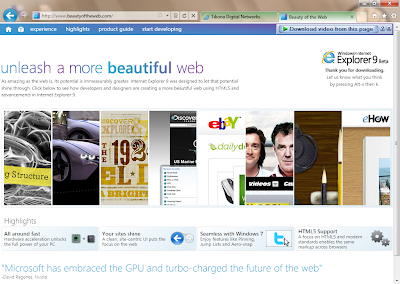A simple, small yet useful utility
to save your time from unwanted websites.
All of us have one or the other important tasks to complete in the next couple of hours, but most of us usually waste most of our time socializing or hovering here and there over the internet and hence cannot focus on our work because of the turmoils coming from websites like facebook, twitter, youtube, etc.
It would be unfair to crown these sites as time-wasting, however because of the continuous updates, its actually very late when we realize that we have wasted a lot of time... atleast happens with me... :-P
Wondering, we had something that would disable these temporarily without much overhead....?
MyWall-Your own little firewall will help you toggle these (if you wish) in just a click
Did i forget to tell... You can also use this as a firewall to block as many sites you wish.
Useful in schools, small offices, even for your kids..
MyWall is a simple script written by me that will just in a click do
all the overhead required to block and unblock websites in the
back-end, which is usually a complex task to do.
I made this coz I'm lazy moving to antivirus firewall or the hosts file to
block/unblock things...
You can Download MyWall from here.
All you have to do is extract the zip to a place.
Just a click will block the unwanted websites
and clicking it again will unblock them.
PS: You may see a User Access Control warning dialog in Windows Vista or 7 – just say yes.
Don't worry its not a virus...! Its a home-made script... ;)
Also, if the script doesn't execute, whitelist it in your antivirus.
My Kaspersky blocks it...I whitelisted it and it works fine..!
Ya, you must be wondering which sites and how would it block...? 'eh
Yes..! The list is editable.
Just open the MyWall.vbs file (which you would get after extracting) in a text editor.
Notepad as usual. However I recommend Notepad++ as it would make things more clear.
Now edit WebsitesToBlock section (its in the beginning of the script)
to include/remove any/other website(s) in the banned list.
My predefined list which you'll already see in the script is:
to save your time from unwanted websites.
All of us have one or the other important tasks to complete in the next couple of hours, but most of us usually waste most of our time socializing or hovering here and there over the internet and hence cannot focus on our work because of the turmoils coming from websites like facebook, twitter, youtube, etc.
It would be unfair to crown these sites as time-wasting, however because of the continuous updates, its actually very late when we realize that we have wasted a lot of time... atleast happens with me... :-P
Wondering, we had something that would disable these temporarily without much overhead....?
MyWall-Your own little firewall will help you toggle these (if you wish) in just a click
Did i forget to tell... You can also use this as a firewall to block as many sites you wish.
Useful in schools, small offices, even for your kids..
MyWall is a simple script written by me that will just in a click do
all the overhead required to block and unblock websites in the
back-end, which is usually a complex task to do.
I made this coz I'm lazy moving to antivirus firewall or the hosts file to
block/unblock things...
You can Download MyWall from here.
All you have to do is extract the zip to a place.
Just a click will block the unwanted websites
and clicking it again will unblock them.
PS: You may see a User Access Control warning dialog in Windows Vista or 7 – just say yes.
Don't worry its not a virus...! Its a home-made script... ;)
Also, if the script doesn't execute, whitelist it in your antivirus.
My Kaspersky blocks it...I whitelisted it and it works fine..!
Ya, you must be wondering which sites and how would it block...? 'eh
Yes..! The list is editable.
Just open the MyWall.vbs file (which you would get after extracting) in a text editor.
Notepad as usual. However I recommend Notepad++ as it would make things more clear.
Now edit WebsitesToBlock section (its in the beginning of the script)
to include/remove any/other website(s) in the banned list.
My predefined list which you'll already see in the script is:
WebsitesToBlock=Array("twitter.com", "www.youtube.com", "facebook.com")
Simple 'eh... :)
Cheers :)














